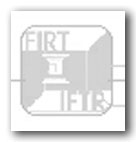Peter Matussek Return of the Memory Theatres – Cure or Symptom of the Storage Culture? ABSTRACT (full text will appear here after publication)
They had fallen into oblivion for centuries but now they are suddenly more popular than ever: the Memory Theatres from the Renaissance, i.e. the attempts of the 16th and 17th century to revitalize the scholastically stifled memory culture. How to explain this surprising return of the past into the present? And in what way can the old strategies of staging information counteract the mnemonic disorders of a computer age that in its pathological emphasis on storing everything forgets how to remember?

![]()
Vortrag mit Multimedia-Präsentation 6.7.2002,
>>World Congress FIRT/IFTR Amsterdam
The answer to the first question lies in the similarity of historic and present concerns. Inspired by the Memory theatres of Giulio Camillo (1480–1544) and Robert Fludd (1574–1637) knowledge engineers, interface designers and computer artists of today try to oppose the static model of 'storage and retrieval' with performative ways of knowledge presentation.
It's harder to answer the second question because the historic Memory Theatres are complex phenomena that can only be transposed to today's stagings of information in a very limited way. Their contemporary arrangements of images are a composite of magical, encyclopaedic and inventive moments. Both the magical and encyclopaedic moments cannot be transferred because the metaphysics of a closed and centralistic cosmology that are presumed by them are no longer valid in any way. Therefore attempts to digitally adapt these arrangements are at best parodies of the original intentions – yet they occur in great numbers. They prove themselves to be rather a compensatory symptom than a cure for the digitally hypertrophied memory.
The inventive moment on the other hand can certainly be actualised when one transports the visual strategies by which the historic Memory Theatres stimulated the imagination of their visitors to the technologies of today. In this respect there are remarkable examples of computer art that could be directive for future models of visualising information.
.